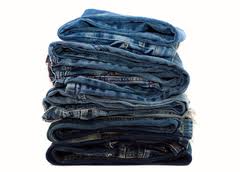To read the full article, please login. The full content of this article and all premium articles is available exclusively for site members.
Site membership is free. If you are an existing user, please login. New users may register below.
Latest technological developments in the digital printing space for textile
Latest technological developments in the digital printing space for textile Digital printing is driven by technology and innovation. It is presently one of the most exiting segments in the whole textile processing. A variety of new printing systems and consumables for digital printing have been launched during ITMA 2015 in Milan, Italy, the world’s most established trade exhibition for textile and garment manufacturing technologies. Industrial single pass digital printing The most significant development is perhaps the launch of three new industrial single pass digital printers to join MS-LaRio in the segment of high productivity ink jet printers. The new printers are Konica Minolta Nassenger SP-1, Atexco Vega One and SPGPrints Pike. MS´s LaRio, launched in 2010, employs Kyocera printheads, a resolution of 600×600 dpi, a maximum printing width of 3.2 meters wide at speed of up to 75 linear meters per minute with 4 colours and 35 m/min with 8 colours. MS also announced during ITMA that they sold more LaRio printers to various customers including Sanitars Cotton Line (Italy), SCR (Italy), Shrijee (India) and Ruyi (China). MS LaRio digital printer exhibited at ITMA trade fair Pike presentation during ITMA trade exhibition Nassenger SP1 digital printer by Konica Minolta SPGPrints new single pass digital textile printer flagship model Pike isbased on Fujifilm Samba print heads. The new printer has a higher resolution of 1200×1200 dpi, a maximum printing width of 1.85 meters wide, delivering a typical productivity of 40 linear meters per minute. Pike employs Archer Technology to provide a higher printing distance (4mm) from the nozzle plate necessary for digital textile applications, enabling a wide range of fabric textures. SPGPrints announced during the ITMA exhibition that they sold the first Pike single-pass digital printer to KBC Fashion, based in Lörrach, Germany. The Japanese company Konica Minolta announced the NASSENGER SP-1, a single-pass ultra-high speed, high productivity and high resolution digital printer. The new single pass printer system is based on newly developed print heads that can eject smaller ink droplets. It uses proprietary ink ejection control technology, which enables adjustment of ink droplet sizes, thus achieving higher-quality reproduction of fine patterns and colour gradients. For minimized downtime, the model is equipped with functionality that compensates for errors detected by print head nozzle sensors, and able to adjust density uniformly for each colour on all of the print head modules, thanks to density correction functions using image sensors. The Chinese company Atexco (Hangzhou Honghua Digital Technology) , also launched a single pass digital printer during ITMA 2015, the Atexco Vega One which is also based on Fujifilm Samba print heads. Digital inks Digital inks are a major cost factor in operating costs of ink jet printing on textiles. After the ink jet printers have reached productivity levels comparable or higher than screen printing, the comparably high ink cost are still a limiting factor for cost efficient digital printing. However, ink prices have already come down due to more competition and open systems. Ink margins are still high, process are



